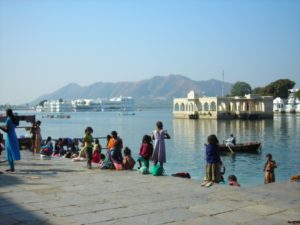 In early 2010 India will begin what some have called the world’s largest administrative task, recording their national census. A formidable task for any nation, India is attempting to push the envelope even further this year by not only counting the number of citizens, but by photographing and fingerprinting every citizen over the age of 15, and in return issuing them a national I.D. card.
In early 2010 India will begin what some have called the world’s largest administrative task, recording their national census. A formidable task for any nation, India is attempting to push the envelope even further this year by not only counting the number of citizens, but by photographing and fingerprinting every citizen over the age of 15, and in return issuing them a national I.D. card.
The Indian government has done this before; in fact they’ve been doing it every ten years since it was initiated by the British. But what makes this census so challenging is the scope and depth of what they are hoping to do. Unlike much of the western world, most of India is made up of rural subsistence farmers who basically live “off the gridâ€. They have little to no education, no identification, and don’t pay taxes. Without official documentation they have a hard time accessing government services or borrowing money. Now, if this works, they will be for the first time “part of the systemâ€.
On April 1st, census takers set off across India visiting all structures serving as a place of residence. In India this could mean anything from a shack made of scrap metal to the back seat of a rickshaw. The census will attempt to produce a set of data that can be used as the basis of government policy. Once it has been completed they will know the accessibility of toilets, electricity, and clean drinking water. They will even go as far as recording cell phone, computer, and internet usage, bank account information and of course the photo and fingerprints of all their citizens. Once completed, every citizen will receive a national I.D. card.
 Here in the States, it’s doubtful we could ever get such an initiative in effect so quickly. An idea like this would immediately be looked at with suspicion. Despite the benefits, our competing ideologies would bicker until a watered down version arose. In India most people welcome this ambitious task. They believe that it will cut down on bribery, reduce government inefficiencies, and bring standardization to their system. Having a national I.D. card and detailed information on country demographics will also pave the way for universal education and health care by establishing who is eligible and where services are needed most.
Here in the States, it’s doubtful we could ever get such an initiative in effect so quickly. An idea like this would immediately be looked at with suspicion. Despite the benefits, our competing ideologies would bicker until a watered down version arose. In India most people welcome this ambitious task. They believe that it will cut down on bribery, reduce government inefficiencies, and bring standardization to their system. Having a national I.D. card and detailed information on country demographics will also pave the way for universal education and health care by establishing who is eligible and where services are needed most.
But, can it be done? Measuring those citizens who have jobs, homes, and pay taxes…sure no problem, but what about those remote villages? What about the shockingly large number of homeless people living in India on street corners and under bridges? How can over a billion people effectively be counted when so many are transient? I honestly can’t imagine how they’ve done it in the past! Regardless of the method, the 2011 Indian census will paint a better picture of present day India. It will provide the information needed to effectively allocate money in the right direction and hopefully benefit some of India’s poorest people.

